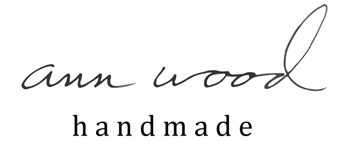Happy cats to sew, in two sizes! Cause I’m nice like that. They’re quick and easy and there’s tons of room to experiment – add some applique and embroidery to make it resemble somebody you know and love. You can sew by hand or machine. I’ve made a bunch so far and I’m not ready to stop, there is something satisfying about this growing crowd of cat friends.

They are straight out of my daily paintings, the funny little cats who wander around the cobblestone streets and forests. This is a great beginner project and there are a couple tips mixed in the instructions. Let’s make happy cats!
download the patterns
You will also need:
- cotton fabric
- a basic sewing kit
- chopstick or similar
- stuffing – i like wool
- buttons
- embroidery thread for the features


1. Download and cut out the templates. There is a small and large, you could make a whole cat family. I’ll be demonstrating on the large. Cut out your template and pin it on a double layer of fabric – right sides together. Cut out.
- 2
- 3
2. Separate the two fabric pieces and mark your seam line. I measure the quarter inch and make little dots around the pattern – every couple inches – as a guide and mark in pencil. Pro tip: place a sheet of fine sandpaper under the fabric piece and it won’t slide around so much. I always recommend marking the seam line and it is essential in this pattern for getting the legs just right. Also mark the area to leave open.
3. Make guide dots for the face. Decide which direction you want your cat to face while looking at the right side (printed side) of the fabric. Mark the dots. Push the pencil through the paper as shown and mark for guides or alternatively you could trace the whole face onto the fabric.
back to the happy cats in just a moment:
It has been a priority here for years to create high quality and fun free patterns (there are tons) like the happy cats on an ad free site. There are not very many of those left and it is becoming increasingly difficult. In an effort to keep the free awesomeness flowing I’ve created an opportunity for you to support and show some love to my free pattern library.
Support free patterns like happy cats with a happy donation.
Click here to add your support.
Back to the happy cats:

4. Pin the fabric pieces back together – right sides of the fabric together. Use lots of pins. Sew around the seam line. You can hand or machine sew. I’m sewing on the machine. Leave open as indicated for turning and stuffing.

5. Before turning the cat right side out clip little notches around the curve of each foot as shown on the front foot above and the tip of the tail. Clip off the points of the ears near the seam and remove a little of the seam allowance. Clip a notch into each of the corners where the legs meet the body, Clip notches into the curve where the tail and back meet and at the neck.
- 6
- 7
6. Turn the cat right side out. Use a chopstick to gently push out the legs, ears and tail. Slow firm pressure and twisting a little help. Stretch and massage the curved seams a little with your fingers to smooth them.
7. Stuff -I’m using this wool stuffing. Add a little at a time and be careful not to block the legs and tail with clumps of stuffing until you’ve filled the toes etc.

















































































































































